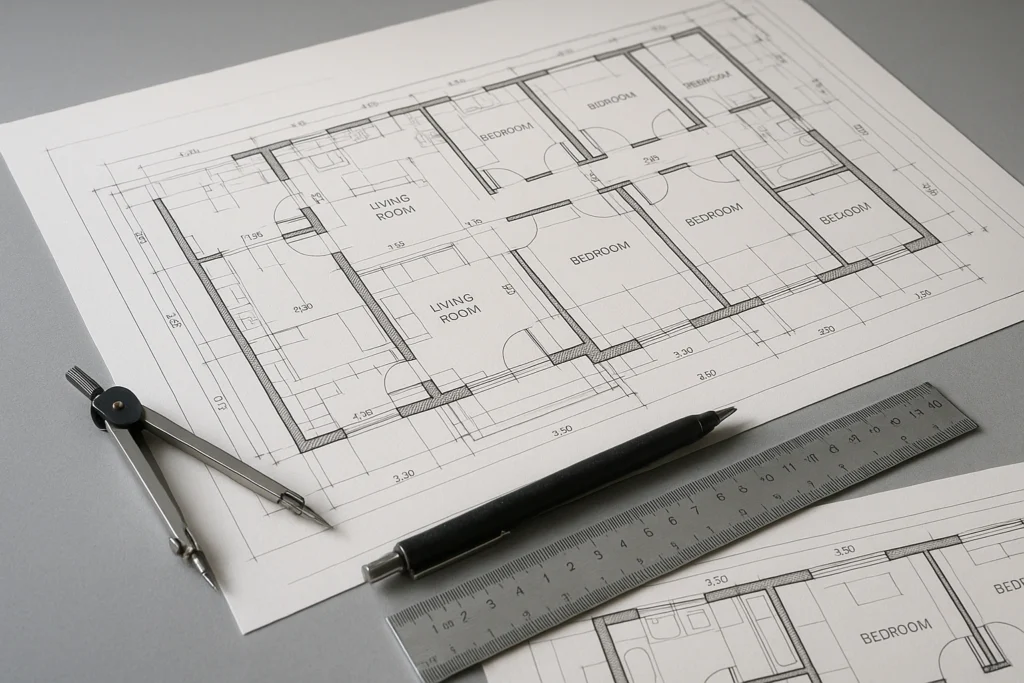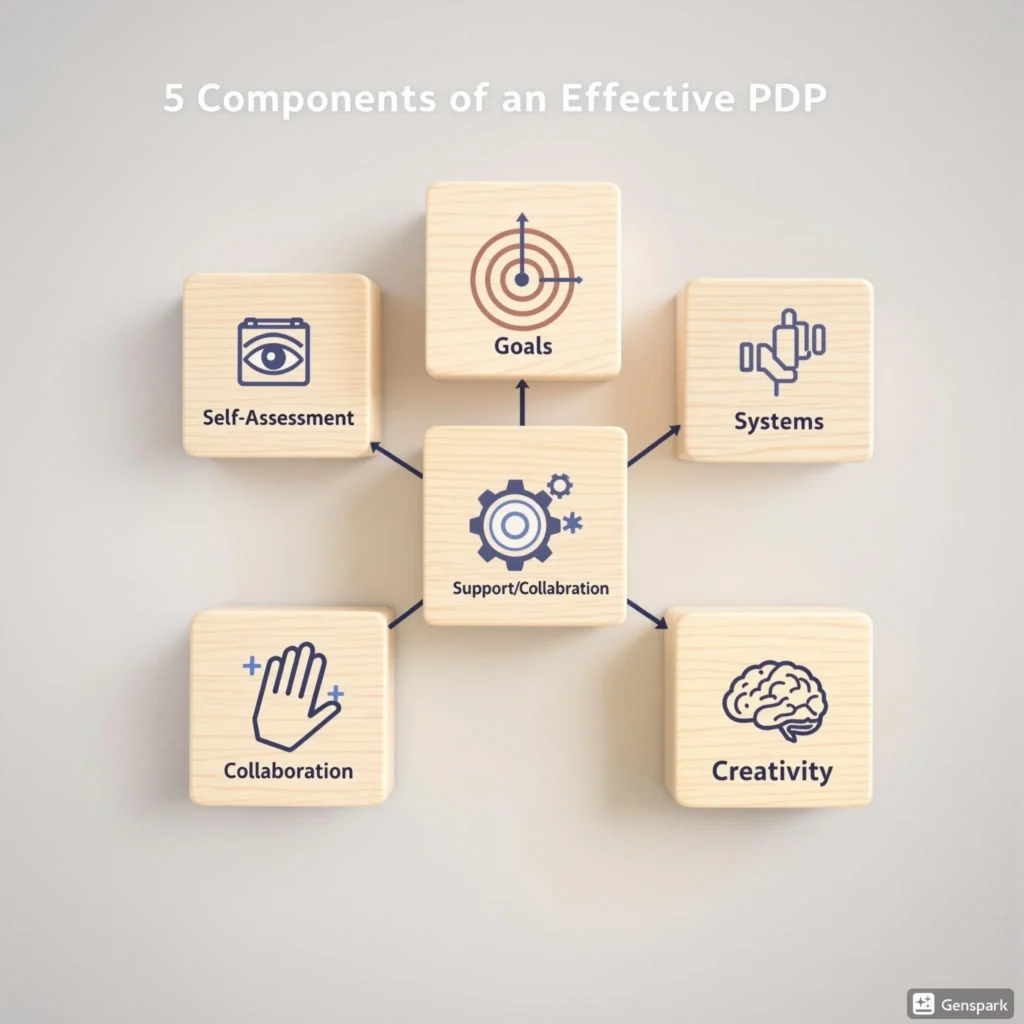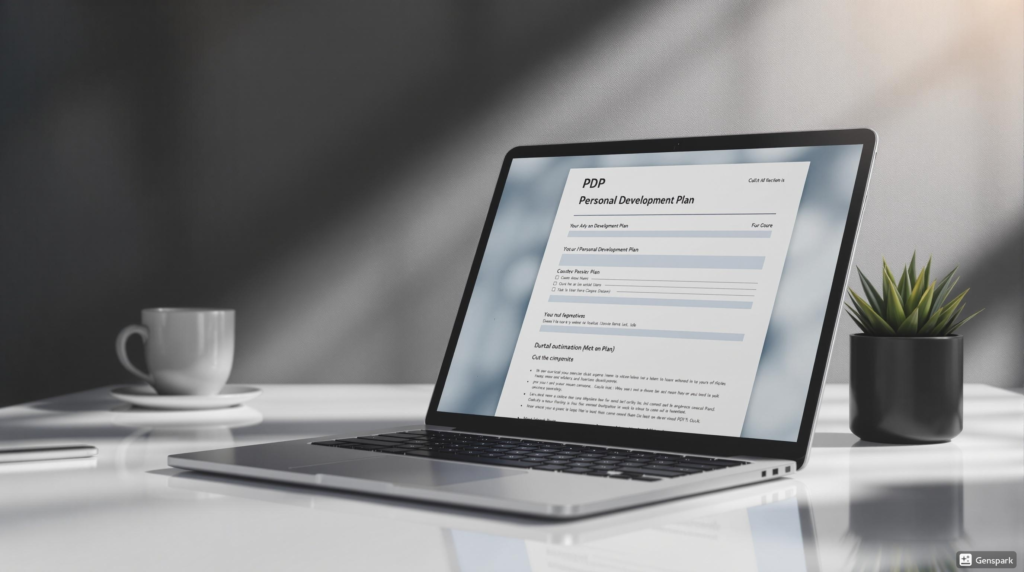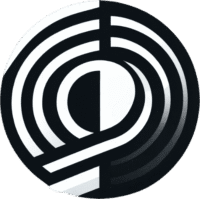A goal without a plan is just a wish. You’ve set ambitious goals, but how do you bridge the vast gap between your destination and your daily actions?
The bridge is a Personal Development Plan (PDP).
Forget the idea of a stuffy, bureaucratic document. A well-crafted PDP is your strategic blueprint for growth. It’s a living, breathing tool that brings clarity, focus, and structure to your ambition, transforming your invisible aspirations into tangible reality.
In this guide, you will learn exactly what a PDP is, why it’s a critical tool for your career and life, and follow a step-by-step blueprint to build a powerful plan you’ll actually use. Let’s architect your growth.
What is a Personal Development Plan (And Why You Absolutely Need One)

A Personal Development Plan (PDP) is a structured document that outlines your goals for personal and professional growth and the specific actions you will take to achieve them. It is your single source of truth, a roadmap that guides your efforts and keeps you accountable.
Why is it a game-changer? A PDP:
- Provides Clarity and Focus: It forces you to define what you truly want and filters out distractions.
- Boosts Motivation: Seeing a clear path from A to B provides a powerful and sustained sense of motivation.
- Creates Accountability: A written plan makes you accountable to the most important person: your future self.
- Measures Progress: It allows you to track your journey, celebrate wins, and learn from setbacks, ensuring continuous improvement.
The 5 Core Components of an Effective PDP
Think of these as the essential building blocks of your plan. Every effective PDP, regardless of its format, contains these five core components.

- Honest Self-Assessment (Where You Are Now): A clear-eyed view of your current reality. This often involves a personal SWOT analysis (Strengths, Weaknesses, Opportunities, Threats) or using tools like the “Wheel of Life” to evaluate different areas of your life.
- Meaningful Goals (Where You Want to Go): These are your specific, measurable, achievable, relevant, and time-bound (SMART) objectives, directly informed by your self-assessment and aligned with your core values.
- Actionable Strategies (How You Will Get There): This is the “how.” For each goal, you’ll list the specific tasks, habits, and projects required to achieve it.
- Required Resources & Support (What You Need): No one succeeds alone. This section identifies the books, courses, mentors, tools, or support systems you’ll need to execute your plan.
- Timeline & Success Metrics (How You Will Measure It): Clear deadlines for your goals and milestones, along with the key performance indicators (KPIs) you will use to track your progress.
While many professionals use a PDP in a corporate setting, it is also an incredibly powerful tool for those just starting out. We’ve created a dedicated guide with personal development plan examples for students to help them bridge the gap between academia and their future careers.
How to Create Your Personal Development Plan: A 5-Step Blueprint
Ready to build? Follow this logical, step-by-step process to architect your plan from the ground up.
Step 1: Conduct Your Self-Assessment
Start with an honest look in the mirror. Ask yourself powerful questions:
- What are my greatest strengths and proudest achievements?
- Where are my knowledge or skill gaps? What are my weaknesses?
- What opportunities for growth are available to me right now?
- What external threats or internal habits could hold me back?
Step 2: Define Your Development Goals
Your assessment reveals the gaps; your goals are the projects to close those gaps. For each key area you want to improve, define 1-3 SMART goals. For example, if a weakness is “public speaking,” a goal could be: “To improve my presentation skills by completing a Toastmasters course and delivering two low-stakes presentations at work in the next 6 months.”
Step 3: Brainstorm Strategies and Actions
For each goal, break it down into concrete actions. Ask: “What are the 3-5 key actions or habits required to make this happen?”
- Goal: “Improve my presentation skills.”
- Actions: 1. Research and enroll in a local Toastmasters club. 2. Read “Talk Like TED” by Carmine Gallo. 3. Practice my presentation in front of a mirror twice a week. 4. Volunteer to present the team update in the next monthly meeting.
Step 4: Identify Resources and Set a Timeline
For each action, identify the resources needed (e.g., budget for the course, time for reading) and assign a realistic deadline. This turns a list of actions into a real project plan.
Step 5: Schedule Your Review Cadence
A PDP is not a static document you create once and forget. It’s a dynamic guide. Schedule a recurring “PDP Review” in your calendar—ideally for 30 minutes every month or at the end of every quarter. Use this time to track your progress, celebrate milestones, and adjust your plan as needed.
The goals you set here are critical. Revisit our Complete Guide to Goal Setting to ensure they are powerful.
Real-World PDP Examples for Career and Life
Here’s how these components come together in practice.

Example 1: PDP for Career Advancement
- Goal: Get promoted to a Senior Analyst role within 12 months.
- Actions: 1. Successfully lead one high-visibility project this year. 2. Complete the Advanced Excel & Data Visualization certification. 3. Find a mentor who is already in a senior role.
- Resources: Company training budget, 3 hours/week for study, mentorship from “John Doe.”
- Metric: Promotion confirmed by end of Q4.
Example 2: PDP for Skill Development
- Goal: Become proficient in Python for data analysis within 6 months.
- Actions: 1. Complete the “Python for Everybody” course on Coursera. 2. Build 3 personal projects using Python and Pandas. 3. Contribute to one open-source project.
- Resources: Coursera subscription, “Python for Data Analysis” book.
- Metric: Able to independently clean and analyze a new dataset using Python.
Example 3: PDP for Personal Well-being
- Goal: Reduce work-related stress and avoid burnout over the next 90 days.
- Actions: 1. Meditate for 10 minutes every weekday morning. 2. Go for a 30-minute walk during my lunch break 3x per week. 3. Stop checking work emails after 7 PM.
- Resources: Calm or Headspace app, supportive partner for accountability.
- Metric: Self-reported stress level (on a scale of 1-10) reduces by 2 points.
Here’s how these components come together in practice. For even more inspiration, explore our complete library of PDP examples for different life scenarios
Free Personal Development Plan Template
Ready to architect your growth? Talking about a plan is one thing; building it is another. To help you get started immediately, we’ve created a practical, fillable PDP template.

It includes all the sections discussed in this guide, structured in a clean and logical format.
Download our free, fillable PDP template and turn your plan into a reality.
Your Journey Starts Now
Don’t leave your growth to chance. A Personal Development Plan is the single most powerful tool for taking control of your personal and professional trajectory. It’s your declaration that you are the architect of your own life.
Use our guide and the free template to outline the first draft of your Personal Development Plan today. Start with just one goal. The journey of a thousand miles begins with a single, well-planned step.
